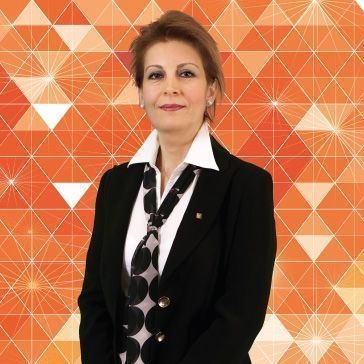Interview with Cigdem Dayan, the Chief Legal Counsel at ING Bank Turkey.

Cigdem Dayan
CEELM: You started your career at Yapi ve Kredi. How did you get to ING?
CD: I started with Yapi ve Kredi in 1990, June, as a lawyer. And step by step I moved higher. And lastly I worked for Yapi Kredi as a Senior Vice President, and 2006, February, I transferred to Oyak Bank as an Executive Vice President. ING bought Oyak Bank shares, and one year later, the name was changed.
CEELM: Why did you move to Oyak Bank?
CD: Koc Group bought Yapi Kredi and the structure was not clear. And the job that Oyak Bank offered me seemed a better opportunity for me.
CEELM: You never worked in a law firm. Some people think that working in law firms provides a basic level of training and exposure to a wide range of work, and that is useful for training and experience and development. Do you regret not having that experience, or was it not so important for you?
CD: I didn’t prefer it, because in 1990, Yapi Kredi was like a school. I learned lots of things at Yapi Kredi. I had the chance to see different cases, and it is a big bank, so …
CEELM: Was it a big legal team?
CD: Yes. Working in a big bank gave me an opportunity to see interesting and different cases, and I gained a lot of experience.
CEELM: So in some ways it was like a law firm – you got to learn a lot of different things?
CD: Yes. It was like a big law firm.
CEELM: Does that mean that coming out of university you knew you wanted to work in banks? That’s all you’ve done. Did you know you wanted your career to be as a banking lawyer?
CD: When I went to university I thought I would stay in academia. My professor wanted to work with me. But I waited a long time for an open position. Nearly one year I waited. At that point I thought, “maybe I’ll try to work outside,” and I applied to banks. Yapi Kredi called me, and I accepted their offer, and six months later a position opened at the university, and my professor called me – but I said “no, I like it here. I prefer to work with the bank.” [laughs].
CEELM: So you didn’t think, “I’m going to be doing this for the next 20 years of my life”? You liked it, and …
CD: First I thought, “maybe five years will be enough for me.” [Laughs]. “Five years later I’ll move.” But I couldn’t do it.
CEELM: You’re still here.
CD: Yes, I couldn’t do it. Because I do like it.
CEELM: That’s my next question. How would you describe what you do? I know you’re the Chief Legal Counsel. But what do you do? What is your role in the bank, in your own mind?
CD: I and my colleagues are interested in all cases, all law suits all litigation against the bank or by the bank and legal follow-up, labor law, and consultancy, and all branches and the head office. So we are interested in all of the bank’s legal issues. Of course sometimes we take a … oh, how can I explain … for instance, the Capital Markets Board is a very special area, and Competition Law is a very special area, and we have a consultant – an outside consultant to help with those matters.
CEELM: I want to ask a few questions about how you work with outside lawyers. How do you decide what work you keep inside the bank and what work you give to external counsel? When do you give work to external counsel?
CD: Two reasons. One is, if the subject is “specific” and requires a different expertise – for instance, as I mentioned before, matters involving the Capital Markets Board or Competition Law. These are very specialized areas, and Intellectual Property law is another one. We have external counsels to assist us on these subjects. Also for enforcement of non-performing loans, we work with outside law firms. Not counsel. Law firms. Not only in Istanbul. In different cities.
CEELM: You have law firms in these cities you work with?
CD: Yes, local law firms. We prefer to work with local law firms.
CEELM: Do you select the firms that you work with yourself?
CD: My colleagues – some of my colleagues – go to different cities in all over Turkey, to check the law offices we engage with, their office space, their equipment, how many people work with them.
CEELM: These are some of your colleagues?
CD: Yes, I have an investigative team.
CEELM: Really? That investigates the law firms?
CD: Yes. After we start to work with an external lawyer, for instance one year later, my colleagues make a visit plan.

